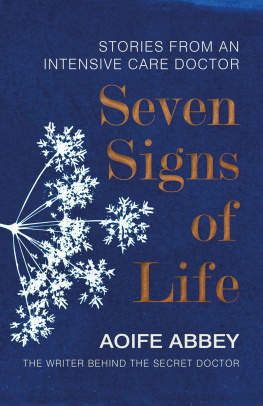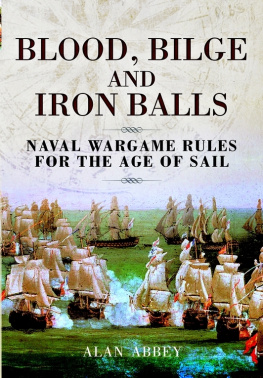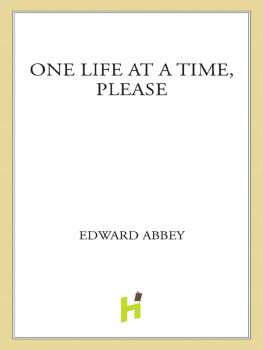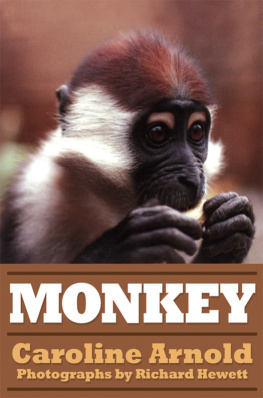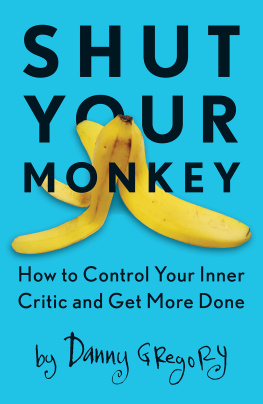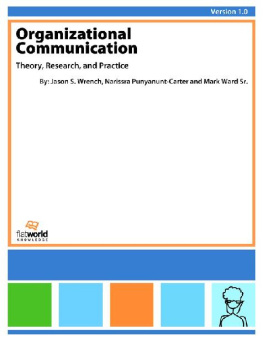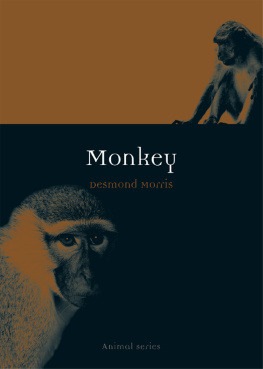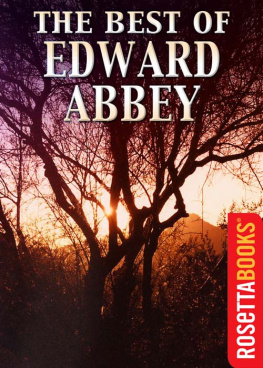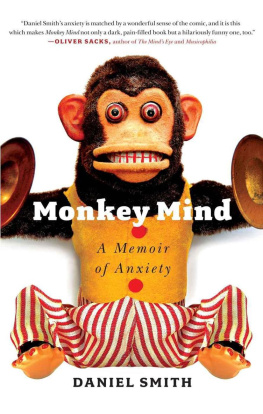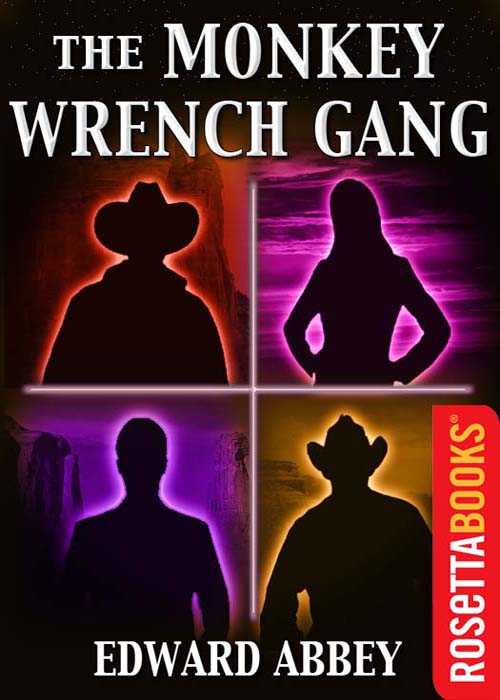The Monkey Wrench Gang
Edward Abbey
Copyright
The Monkey Wrench Gang
Copyright 1975, 1985 by Edward Abbey, renewed 2003 by Clarke Abbey
Cover art to the electronic edition copyright 2011 by RosettaBooks, LLC
All rights reserved. No part of this book may be used or reproduced in any manner whatsoever without written permission except in the case of brief quotations embodied in critical articles and reviews.
Electronic edition published 2011 by RosettaBooks LLC, New York.
ISBN e-Pub edition: 9780795317361
This book, though fictional in form, is based strictly on historical fact. Everything in it is real or actually happened. And it all began just one year from today.
E. A.
Wolf Hole, Arizona
IN MEMORIAM: Ned Ludd
a lunatic living about 1779, who in a fit of rage smashed up two frames belonging to a Leicestershire stockinger.
The Oxford Universal Dictionary
Down with all kings but King Ludd.
Byron
Contents
but oh my desert
yours is the only death I cannot bear.
Richard Shelton
Resist much. Obey little.
Walt Whitman
Now. Or never.
Thoreau
sabotage n. [Fr. < sabot, wooden shoe + AGE: from damage done to machinery by sabots].
Websters New World Dictionary
PROLOGUE
The Aftermath
When a new bridge between two sovereign states of the United States has been completed, it is time for speech. For flags, bands and electronically amplified techno-industrial rhetoric. For the public address.
The people are waiting. The bridge, bedecked with bunting, streamers and Day-Glo banners, is ready. All wait for the official opening, the final oration, the slash of ribbon, the advancing limousines. No matter that in actual fact the bridge has already known heavy commercial use for six months.
Long files of automobiles stand at the approaches, strung out for a mile to the north and south and monitored by state police on motorcycles, sullen, heavy men creaking with leather, stiff in riot helmet, badge, gun, Mace, club, radio. The proud tough sensitive flunkies of the rich and powerful. Armed and dangerous.
The people wait. Sweltering in the glare, roasting in their cars bright as beetles under the soft roar of the sun. That desert sun of Utah-Arizona, the infernal flaming plasmic meatball in the sky. Five thousand people yawning in their cars, intimidated by the cops and bored to acedia by the chant of the politicians. Their squalling kids fight in the back seats, Frigid Queen ice cream drooling down chins and elbows, pooling Jackson Pollock schmierkunst on the monovalent radicals of the Vinylite seat covers. All endure though none can bear to listen to the high-decibel racket pouring from the public-address system.
The bridge itself is a simple, elegant and compact arch of steel, concrete as a statement of fact, bearing on its back the incidental ribbon of asphalt, a walkway, railings, security lights. Four hundred feet long, it spans a gorge seven hundred feet deep: Glen Canyon. Flowing through the bottom of the gorge is the tame and domesticated Colorado River, released from the bowels of the adjacent Glen Canyon Dam. Formerly a golden-red, as the name implies, the river now runs cold, clear and green, the color of the glacier water.
Great rivergreater dam. Seen from the bridge the dam presents a gray sheer concave face of concrete aggregate, impacable and mute. A gravity dam, eight hundred thousand tons of solidarity, countersunk in the sandstone Navajo formation, fifty million years emplaced, of the bedrock and canyon walls. A plug, a block, a fat wedge, the dam diverts through penstocks and turbines the force of the puzzled river.
What was once a mighty river. Now a ghost. Spirits of sea gulls and pelicans wing above the desiccated delta a thousand miles to seaward. Spirits of beaver nose upstream through the silt-gold surface. Great blue herons once descended, light as mosquitoes, long legs dangling, to the sandbars. Wood ibis croaked in the cottonwood. Deer walked the canyon shores. Snowy egrets in the tamarisk, plumes waving in the river breeze.
The people wait. The speech goes on, many round mouths, one speech, and hardly a word intelligible. There seem to be spooks in the circuitry. The loudspeakers, black as charcoal, flaring from mounts on the gooseneck lampposts thirty feet above the roadway, are bellowing like Martians. A hash of sense, the squeak and gibber of technetronic poltergeists, strangled phrase and fibrillated paragraph, boom forth with the hollow roar, all the same, of AUTHORITY
this proud state of Utah [bleeeeeeep!] glad to have this opportunity [ronk!] take part in opening of this magnificent bridge [bleeeeeeet!] joining us to great state of Arizona, fastest growing [yiiiiiiiiiiiinnnnnnnnnng!] to help promote and assure continued growth and economic [rawk! yawk! yiiiinnnng! niiiinnnnnnng!] could give me more pleasure, Governor, than this significant occasion [rawnk!] of our two states [blonk!] by that great dam.
Waiting, waiting. Far back in the line of cars, beyond reach of speech and out of sight of cop, a horn honks. And honks again. The sound of one horn, honking. A patrolman turns on his Harley hog, scowling, and cruises down the line. The honking stops.
The Indians also watch and wait. Gathered on an open hillside above the highway, on the reservation side of the river, an informal congregation of Ute, Paiute, Hopi and Navajo lounge about among their brand-new pickup trucks. The men and women drink Tokay, the swarms of children Pepsi-Cola, all munching on mayonnaise and Kleenex sandwiches of Wonder, Rainbo and Holsum Bread. Our noble red brethren eyeball the ceremony at the bridge, but their ears and hearts are with Merle Haggard, Johnny Paycheck and Tammy Wynette blaring from truck radios out of Station K-A-O-SKaos!in Flagstaff, Arizona.
The citizens wait; the official voices drone on and on into the mikes, through the haunted wiring, out of the addled speakers. Thousands huddled in their idling automobiles, each yearning to be free and first across the arch of steel, that weightless-looking bridge which spans so gracefully the canyon gulf, the airy emptiness where swallows skate and plane.
Seven hundred feet down. It is difficult to fully grasp the meaning of such a fall. The river moves so far below, churning among its rocks, that the roar comes up sounding like a sigh. A breath of wind carries the sigh away.
The bridge stands clear and empty except for the cluster of notables at the center, the important people gathered around the microphones and a symbolic barrier of red, white and blue ribbon stretched across the bridge from rail to rail. The black Cadillacs are parked at either end of the bridge. Beyond the official cars, wooden barricades and motorcycle patrolmen keep the masses at bay.
Far beyond the dam, the reservoir, the river and the bridge, the town of Page, the highway, the Indians, the people and their leaders, stretches the rosy desert. Hot out there, under the fierce July sunthe temperature at ground level must be close to 150 degrees Fahrenheit. All sensible creatures are shaded up or waiting out the day in cool burrows under the surface. No humans live in that pink wasteland. There is nothing to stay the eye from roving farther and farther, across league after league of rock and sand to the vertical faades of butte, mesa and plateau forming the skyline fifty miles away. Nothing grows out there but scattered clumps of blackbrush and cactus, with here and there a scrubby, twisted, anguished-looking juniper. And a little scurf pea, a little snakeweed. Nothing more. Nothing moves but one pale whirlwind, a tottering little tornado of dust which lurches into a stone pillar and collapses. Nothing observes the mishap but a vulture hovering on the thermals three thousand feet above.


